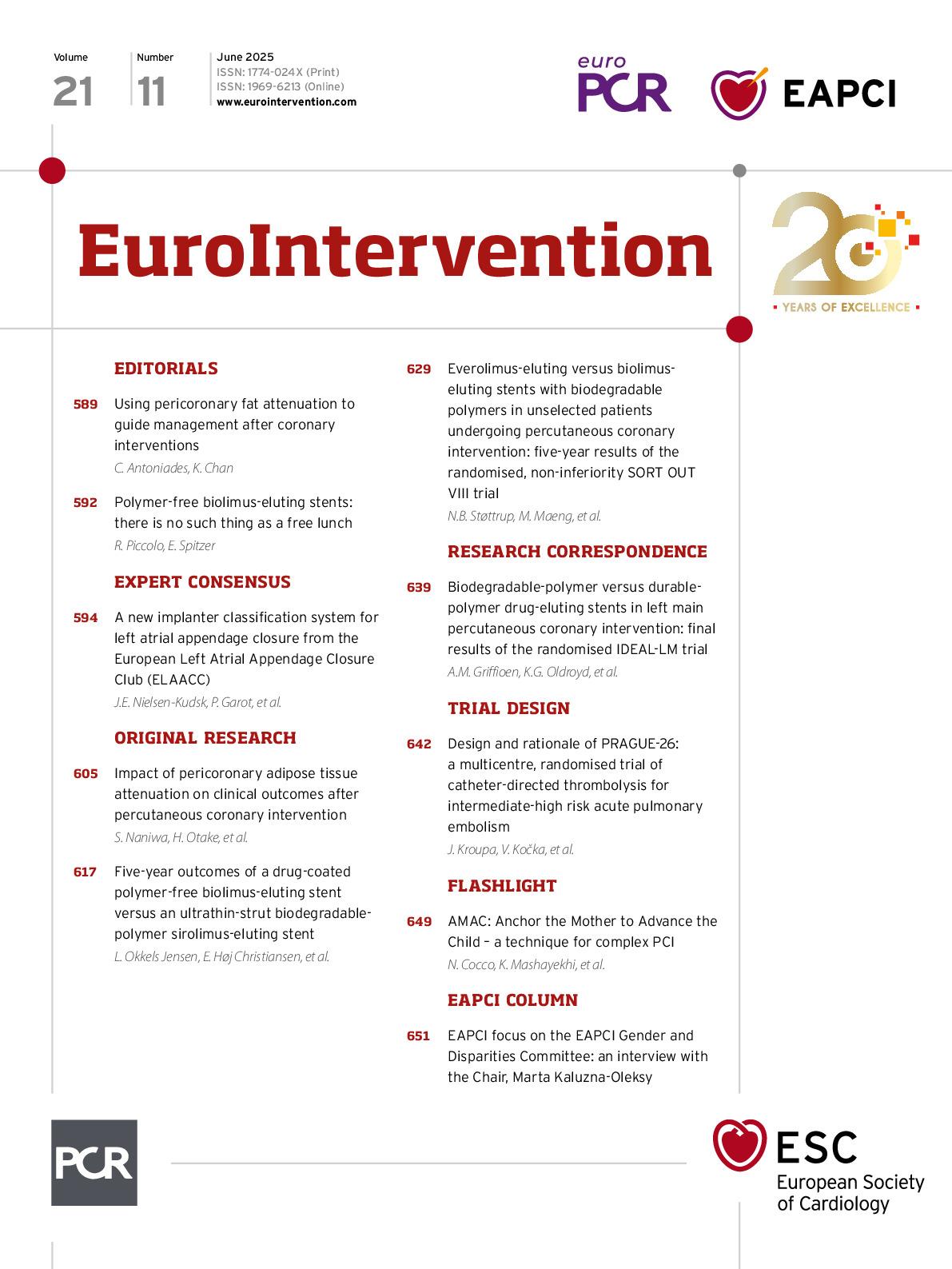Abstract
Background: Long-term outcomes following implantation of drug-eluting coronary stents are necessary to determine safety and efficacy.
Aims: We aimed to report the 5-year outcomes of the SYNERGY thin-strut biodegradable-polymer everolimus-eluting platinum-chromium stent (EES) versus the BioMatrix NeoFlex biodegradable-polymer biolimus-eluting stainless-steel stent (BES).
Methods: This randomised, multicentre, all-comer, non-inferiority trial was undertaken at three sites in Western Denmark. Patients with a clinical indication for percutaneous coronary intervention were eligible for inclusion. Patients were randomly assigned (1:1) to either EES or BES. Outcomes included target lesion failure (TLF: cardiac death, myocardial infarction not clearly attributable to a non-target lesion, or target lesion revascularisation), all myocardial infarctions, and very late stent thrombosis at 5-year follow-up.
Results: We included 2,764 patients and randomly assigned 1,385 patients to treatment with EES and 1,379 patients to treatment with BES. TLF occurred in 150 patients (10.8%) assigned to the EES and in 165 (12.0%) assigned to the BES (rate ratio [RR] 0.88, 95% confidence interval [CI]: 0.71-1.10). The incidence of myocardial infarction was lower in the EES group (EES: n=85 [6.1%], BES: n=116 [8.4%]; RR 0.71, 95% CI: 0.54-0.95), while very late stent thrombosis was rare for both stent types (EES: n=12 [0.9%], BES: n=9 [0.7%]; RR 1.32, 95% CI: 0.56-3.14).
Conclusions: At 5-year follow-up, TLF was comparable for EES and BES. The incidence of myocardial infarction, however, was lower in patients randomised to EES versus BES implantation.
Sign up for free!
Join us for free and access thousands of articles from EuroIntervention, as well as presentations, videos, cases from PCRonline.com

